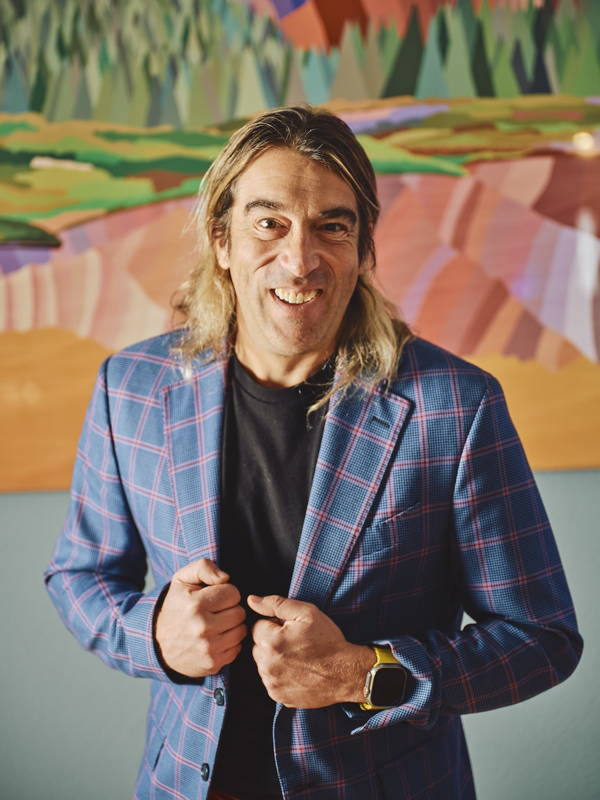ABOUT THE ARTIST
Topher Straus: Pioneering the Future of Digital Contemporary Art
Topher Straus is redefining the landscape of contemporary digital art. His work transcends traditional categories, merging cutting-edge technology with an artist’s intuition to create bold, immersive, and visionary compositions. Through his innovative process—melding digital painting, virtual reality, and high-tech dye sublimation printing onto aluminum—Straus is not just depicting the world; he is reshaping the way we experience it.
Straus’s aesthetic draws from an unconventional mix of influences: the fluidity of Matisse, the vibrancy of Pop Art, and the immersive quality of digital media. His compositions, often based on iconic natural and urban landscapes, are not merely representations but reinventions—visions stripped to their emotional core, pulsing with color, movement, and light. He is known for his ability to turn the familiar into the extraordinary, evoking wonder and new perspectives through an interplay of digital craftsmanship and cutting-edge materiality.

Artist Topher Straus
An Artist at the Intersection of Innovation and Fine Art
Straus’s path to contemporary digital mastery is as unconventional as his art. With a background in film and video game development, he spent years working alongside visionaries such as Academy Award-winning director Robert Altman, learning the art of storytelling through emerging technologies. His embrace of virtual reality as part of his creative process allows him to literally step inside his own compositions, sculpting and painting from within the digital space before transferring his visions to a tangible form through advanced sublimation techniques.
His work has gained international recognition, with exhibitions in major galleries across the United States and expanding into Europe and beyond. His pieces have been acquired for both private and institutional collections, including permanent displays in national landmarks. As he takes his work global, his focus remains on bridging the gap between digital innovation and the fine art world, proving that technology is not merely a tool but a transformative force in contemporary art.
Expanding the Boundaries of Contemporary Digital Art
As he continues to push artistic boundaries, Straus is no longer just painting landscapes—he is creating immersive experiences that challenge how we engage with art in the digital age. His work speaks to the future of contemporary art, where technology and tradition converge to form new modes of expression.
Now expanding into international exhibitions, high-profile collaborations, and major contemporary art fairs, Straus is positioned as a leading force in the evolution of digital fine art. With each new piece, he continues to ask the question: What if we could see the world not just as it is, but as it could be?
